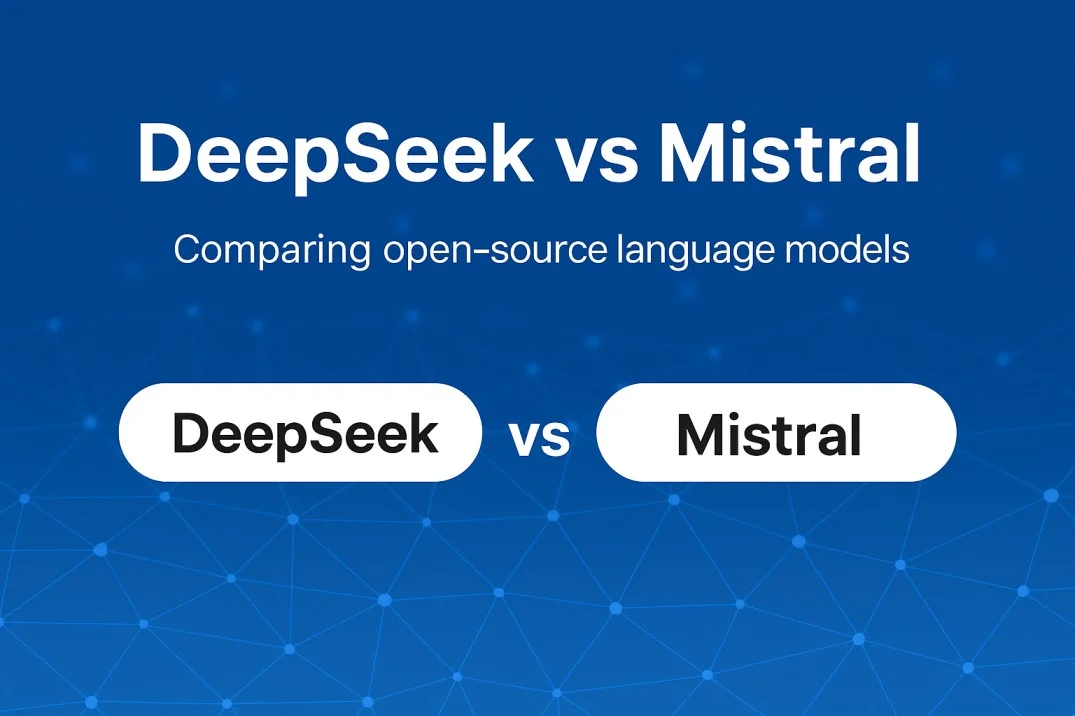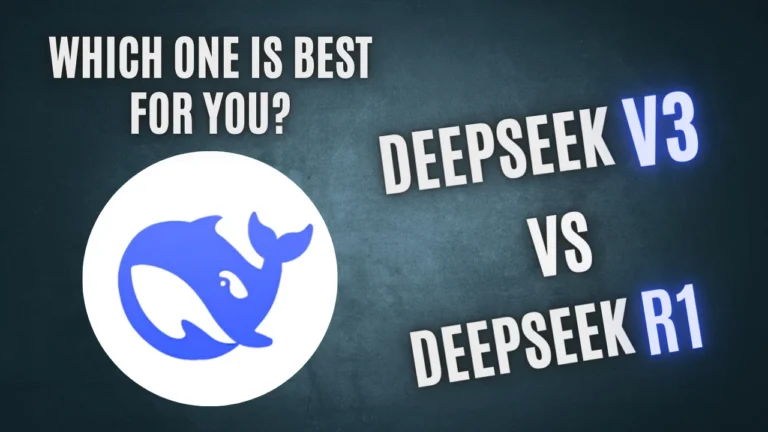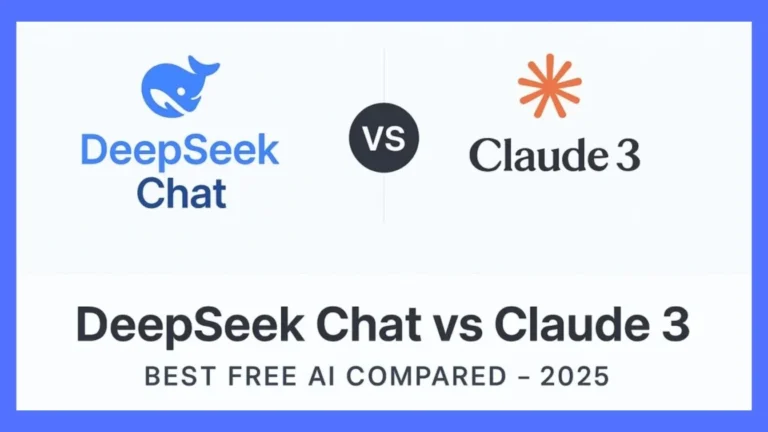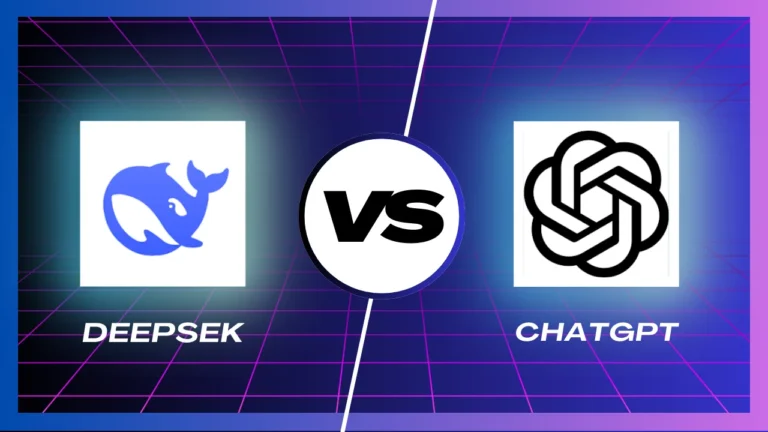Large Language Models (LLMs) are advancing rapidly, revolutionizing the way we code, write, research, and develop AI-powered applications. From open-source experiments to production-ready AI assistants, these models are becoming essential tools for developers across industries. As the ecosystem expands, developers now face a crucial question: which model best suits their needs?
In the ongoing conversation of DeepSeek vs Mistral, both models have emerged as powerful and accessible open-source alternatives, gaining attention for their impressive capabilities. But how do DeepSeek and Mistral truly compare?
Choosing between them isn’t just about performance benchmarks—it’s about usability, adaptability, cost-effectiveness, and how seamlessly they fit into your workflow. Whether you’re building a coding assistant, deploying AI on edge devices, or fine-tuning for specific tasks, picking the right model is key.
This article explores DeepSeek vs Mistral across the areas that matter most: performance, customization, deployment, pricing, and overall developer experience—so you can choose the model that’s right for your project.
DeepSeek and Mistral – Overview
What Is DeepSeek AI?
DeepSeek AI is an open-source large language model developed by the Chinese company DeepSeek, a research-focused team pushing innovation in artificial intelligence. Launched with the intent to support both the global open-source AI community and real-world applications, DeepSeek has quickly gained attention for its strong capabilities in code generation, advanced mathematical reasoning, and multimodal tasks.
While still relatively new compared to other players in the field, DeepSeek AI has made a name for itself with impressive benchmarks, particularly among developers looking for a reliable and fine-tunable LLM that can perform across both programming and research domains.
What Is Mistral AI?
Mistral AI, based in France, is another strong contender in the open-source LLM space. Known for its efficient architecture and minimalistic model sizes, Mistral focuses on building lightweight, cost-effective, and high-performance models that are easy to deploy and fine-tune.
Their flagship releases like Mistral-7B and Mixtral (a mixture of experts model) show how Mistral aims to combine open-source transparency with highly optimized performance, making it appealing for developers who prioritize fast inference, flexible deployment, and accessible model weights.
Both DeepSeek and Mistral stand out in the open-source AI race—each with different goals and strengths. In the next section, we’ll look at how they compare across key use cases.
Installation & Developer Setup
When it comes to developer usability, setup time and integration flexibility matter a lot. Let’s compare DeepSeek vs Mistral in terms of how easy they are to install, run locally, and integrate into your existing projects.
Local Installation
DeepSeek AI offers several ways to get started locally. You can run the models using Docker containers, download them via HuggingFace, or install them manually for use with your local GPU or CPU setup. This flexibility is great for developers who want to fine-tune or experiment with the model in their own environment—but it does require a bit of technical setup and system resources.
On the other hand, Mistral AI is known for its lightweight model architecture, which makes local deployment easier and faster. Smaller models like Mistral-7B run smoothly even on mid-range GPUs and are easier to set up for testing and production use.
In terms of local installation, Mistral wins in simplicity, while DeepSeek offers more depth and control for developers comfortable with more complex configurations.
API & Integration
Both DeepSeek and Mistral are available on HuggingFace, making integration with tools like LangChain, Transformers, and OpenLLM straightforward.
from transformers import AutoTokenizer, AutoModelForCausalLM
model_id = "deepseek-ai/deepseek-coder-6.7b-instruct"
tokenizer = AutoTokenizer.from_pretrained(model_id)
model = AutoModelForCausalLM.from_pretrained(model_id)
inputs = tokenizer("Explain how a neural network works", return_tensors="pt")
outputs = model.generate(**inputs, max_new_tokens=100)
print(tokenizer.decode(outputs[0]))
You can use a similar approach for Mistral:
from transformers import AutoTokenizer, AutoModelForCausalLM
model_id = "mistralai/Mistral-7B-Instruct-v0.1"
tokenizer = AutoTokenizer.from_pretrained(model_id)
model = AutoModelForCausalLM.from_pretrained(model_id)
inputs = tokenizer("What is reinforcement learning?", return_tensors="pt")
outputs = model.generate(**inputs, max_new_tokens=100)
print(tokenizer.decode(outputs[0]))
Real-World Developer Use Cases
To truly understand how DeepSeek and Mistral perform, we need to see them in action. Let’s explore three key areas where developers commonly use large language models: code generation, mathematical/logical reasoning, and prompt adaptability.
Code Generation
Both DeepSeek and Mistral have strong code generation capabilities, but DeepSeek stands out with its code-focused architecture and training data. Let’s take a simple example:
Prompt
Write a Python function that parses a JSON string and returns a dictionary.
DeepSeek Output:
import json
def parse_json(json_string):
try:
return json.loads(json_string)
except ValueError as e:
print(f"Invalid JSON: {e}")
return None
Mistral Output:
import json
def parse_json(json_string):
try:
return json.loads(json_string)
except ValueError as e:
print(f"Invalid JSON: {e}")
return None
Math / Logical Reasoning
Large Language Models are increasingly used for solving math problems and logical reasoning tasks. Here’s a test prompt:
Prompt:
Solve step-by-step: If 3x + 2 = 11, what is the value of x?
DeepSeek Output:
3x + 2 = 11
Subtract 2 from both sides: 3x = 9
Divide both sides by 3: x = 3
Mistral Output:
3x + 2 = 11
3x = 9
x = 3
Fine-Tuning & Customization
For developers and organizations looking to tailor models to specific use cases, fine-tuning capabilities and customization flexibility are critical. Let’s compare how DeepSeek and Mistral perform in this area.
Fine-Tuning Options
Both DeepSeek and Mistral support fine-tuning, but their infrastructure and documentation differ.
- DeepSeek AI provides more structured support for fine-tuning. The models are released on Hugging Face with detailed instructions for parameter-efficient fine-tuning (LoRA, QLoRA). The DeepSeek team also shares research checkpoints optimized for code and math.
- Mistral models are designed for simplicity and fast inference. While fine-tuning is possible, the documentation is more community-driven. However, the small model size (e.g., Mistral-7B) makes it affordable and accessible even for those with limited resources.
Community Tools and Ecosystem
- DeepSeek benefits from its integration with the broader Hugging Face ecosystem and a growing GitHub presence. Developers can find sample notebooks, fine-tuning scripts, and inference guides tailored for use cases like coding assistants or math tutors.
- Mistral has a strong open-source community and is optimized for low-latency inference. Many developers prefer it for custom chatbot projects and edge AI tools, especially when budget or hardware constraints are a concern.
Model Adaptability
- DeepSeek’s code-focused versions adapt well to domain-specific fine-tuning, particularly in software development and STEM areas.
- Mistral’s lighter architecture allows fast testing and prompt-based customization, even without full fine-tuning.
DeepSeek And Mistral – Feature Comparison Table
| Feature | DeepSeek | Mistral |
|---|---|---|
| Developer | DeepSeek AI (China) | Mistral AI (France) |
| Model Type | Open-source LLM with a focus on code and math reasoning | Lightweight, high-performance open-source LLM |
| Main Strengths | Code generation, mathematical logic, detailed reasoning | Fast inference, easy deployment, multilingual support |
| Model Sizes | 6.7B (e.g., DeepSeek-Coder), other variations available | Mistral-7B, Mixtral (Mixture of Experts) |
| Deployment | More compute-heavy; ideal for local GPU/CPU setups | Efficient on low-resource or CPU-only systems |
| Ease of Installation | Flexible options (Docker, Hugging Face, manual) with more setup steps | Very easy to deploy locally with minimal setup |
| Fine-Tuning Support | Strong support (LoRA, QLoRA, domain-specific checkpoints) | Community-driven; fine-tuning possible but less structured |
| Customization | Ideal for coding assistants, STEM tools, research-grade tasks | Great for chatbots, edge devices, fast prototyping |
| Documentation | Well-documented via Hugging Face and GitHub | Lightweight, community-supported resources |
| Performance in Code Tasks | Very strong – optimized for structured coding tasks | Solid performance, but not as specialized |
| Inference Speed | Slower compared to Mistral due to model size | Faster due to smaller architecture |
| Best Use Case | Code assistants, math tutors, educational platforms | Chatbots, edge AI apps, lightweight LLM solutions |
| Integration | Hugging Face, Transformers, LangChain, OpenLLM | Hugging Face, Transformers, OpenLLM |
| Resource Requirements | Requires more powerful GPUs for best performance | Runs well on limited hardware and local CPU setups |
| Community & Ecosystem | Growing developer ecosystem; strong GitHub activity | Strong open-source support and practical community tools |
Which Model Is Better for You?
When deciding between DeepSeek and Mistral, the right choice ultimately depends on your specific project needs, available resources, and performance expectations.
Choose DeepSeek when
DeepSeek AI is a solid option if your focus is on code generation or solving complex math and logic problems. It performs especially well in tasks that require structured thinking and instruction-following, making it suitable for applications like coding assistants or educational tools. If you have access to sufficient computing resources, such as local GPUs, and value accuracy and detailed reasoning over lightweight deployment, DeepSeek is likely the better fit.
Choose Mistral when
On the other hand, Mistral is an excellent choice if you’re working in an environment with limited hardware capabilities or need a model that runs efficiently on edge devices or local CPUs. Its lightweight nature makes it easy to deploy, and it’s particularly useful for building fast, responsive AI applications. If your project involves multilingual processing or quick-turnaround chat interfaces, Mistral’s speed and compactness give it a significant edge.
Ultimately, DeepSeek vs Mistral isn’t about which is better in general—but which is better for you. Understanding your goals will help you choose the model that aligns best with your development workflow.
FAQs
Is DeepSeek better than GPT models?
DeepSeek performs impressively in code and math-heavy tasks and can match or outperform some GPT-style models in these areas. However, GPT-4 is still ahead in general reasoning, natural language understanding, and multi-turn conversations.
Can Mistral run on CPU-only systems?
Yes, Mistral’s small model sizes (like the 7B version) are optimized for low-resource environments and can run on CPU-only systems with slower, but still functional, inference times.
Are these models safe for enterprise use?
Both DeepSeek and Mistral are open-weight models that can be audited and customized. While they don’t come with built-in safety guarantees, responsible fine-tuning and prompt control can make them suitable for enterprise-grade applications, especially when used behind secure APIs or with moderation layers.
Conclusion: Choosing Between DeepSeek and Mistral
In the debate of DeepSeek vs Mistral, there’s no one-size-fits-all answer—each model brings unique advantages to the table. DeepSeek and Mistral are both powerful open-source language models, but their strengths differ depending on your project’s priorities. If your focus is high-performance code generation, logical reasoning, or research-grade tasks, DeepSeek is a strong contender. If you need a lightweight, efficient model that runs smoothly on limited hardware and supports fast deployment, Mistral might be the better fit. Ultimately, your choice between DeepSeek and Mistral should align with your technical goals, resource availability, and desired user experience.







